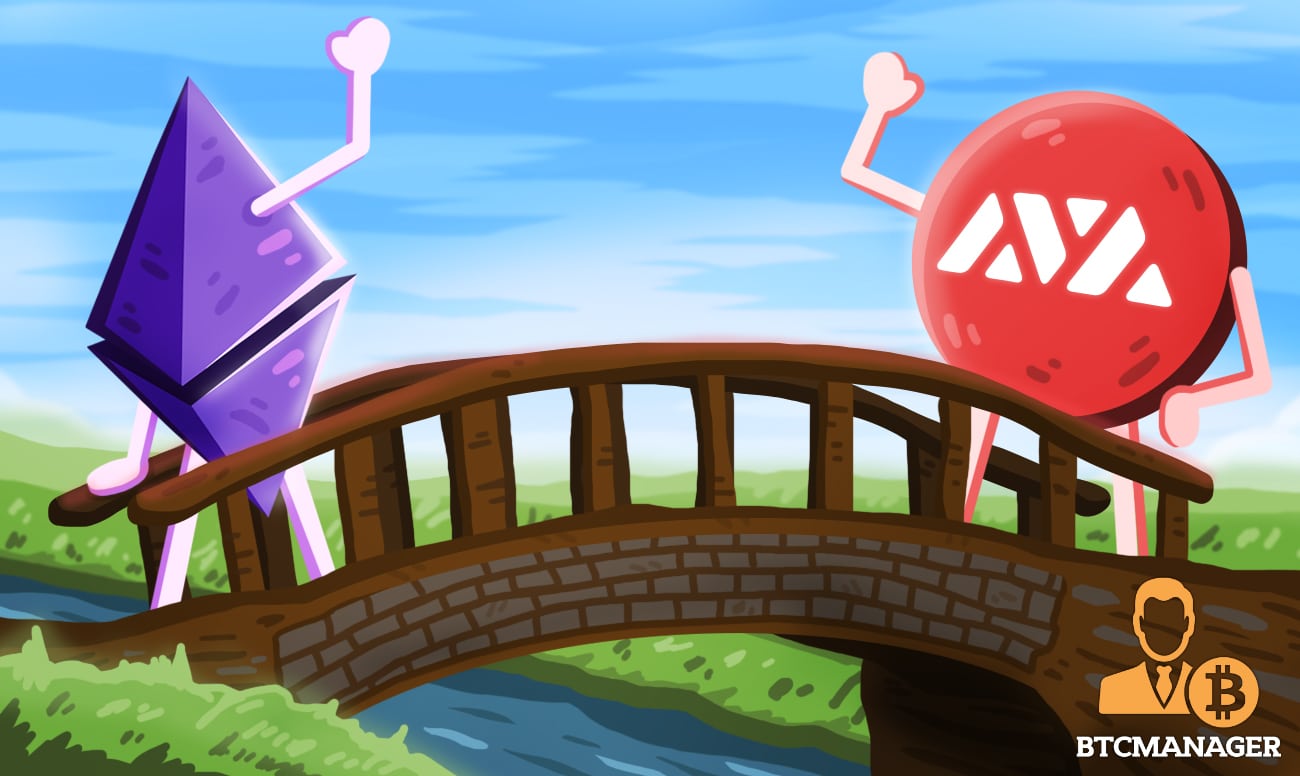Avalanche-Ethereum Bridge for DeFi Users to Manage High Gas Fees

The Avalanche-Ethereum (AEB) is now live, the Block reported on Feb 8.
Moving DeFi Assets to Avalanche
Following the interoperability bridge’s activation, DeFi users in Ethereum can now seamlessly move assets to the Avalanche network.
By doing so, they will be free to trade faster and cheaply since the network has a higher throughput, is decentralized, and boasts relatively low transaction fees.
AEB is built by ChainSafe. Protofire, Hashquark, POA Network, Avascan, and Meter.io will secure the bridge as “Relayers.”
Banking on Scalability and Low Transaction Fees
The Avalanche network describes itself as the internet of reactive dApps.
It is an alternative smart contracting network where projects can readily launch high demand dApps.
From the platform, users can experiment with new financial primitives while remaining interoperable.
Because of their higher throughput, users are free from high transaction fees currently plaguing Ethereum, and other Proof-of-Work powered transactional layers like Bitcoin.
The AEB is a relief for DeFi users, who, while willing to experiment and make money from different protocols, are capped because of the prohibitive Gas fees.
Ethereum Gas Troubles
Data from BitInfoCharts reveal that the average transaction fees on Feb 8 stood at over $20.
Gas rates track the performance of the ETH price. Gas fees will continue to rise even if the block limit is above 12.5 million.
As of writing, parallel data from Etherscan shows that the average utilization rate of Ethereum blocks is over 97 percent. Despite the high Gas fees, users are bidding higher, keen on transacting in Ethereum.
Managing High Transaction Fees
The Avalanche-Ethereum bridge is an option for traders who wish to manage the high Gas fees while still benefiting from low confirmation time without giving up on the dense Ethereum ecosystem.
Emin Gün Sirer, the Chief Executive Officer of the software company developing Avalanche, said:
“Bridges play a vital role in enabling DeFi to grow beyond the borders of one network to complementary ecosystems. This bridge will open the floodgates for hundreds of Ethereum assets, including cornerstone DeFi assets like WBTC, AAVE, and others, to flow into Avalanche, fueling applications like decentralized exchanges, lending protocols, and prediction markets.”
BTCManager, in July 2020, reported on Polyient Games developing an NFT DEX on the Avalanche protocol.














